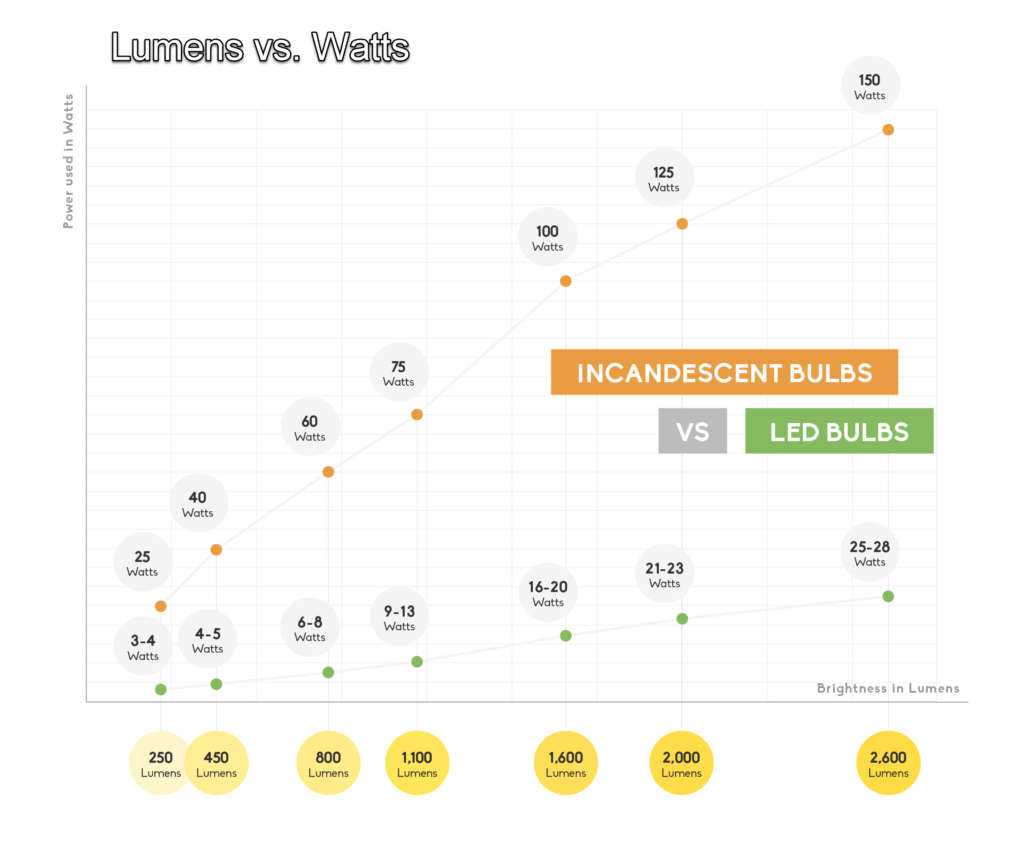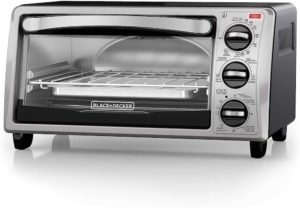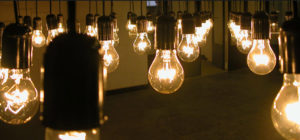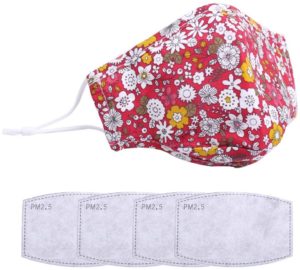If you have made the choice to upgrade to LED lights in your home, you have taken a step in the right direction for reducing your home’s impact on the environment. However, to get the best performance from your LEDs, you must purchase the right type of lights. We’re partnering with LED lighting experts LEDified to offer 6 steps that guarantee you’ll choose the right LED for your home.
How to Choose the Right LED for Your Home
- Choose brightness based on lumens, not watts.
- Pick soft, neutral or cool white light.
- Select a bulb made for dimmers if needed.
- Keep in mind “beam angle.”
- Pay attention to ambience, accents and tasks.
- Use a coupon, get a utility rebate.
Choose the brightness of your LED bulbs based on lumens, not on watts.
When purchasing LEDs, many people make the mistake of judging the bulb’s brightness on the amount of watts on the label. The brightness of incandescent bulbs is linked to watts. However, watts are a measure of how much energy a bulb draws. Because LED lights draw less energy and don’t correlate to brightness, the metric that is used for the brightness in LED lights is lumens.
Compare how many watts it takes an incandescent bulb to the amount an LED needs to generate the same level of brightness:
| Incandescent | LED | Lumens |
| 25 watts | 3-4 watts | 250 |
| 40 | 4-5 | 450 |
| 60 | 6-8 | 800 |
| 75 | 9-13 | 1,100 |
| 100 | 16-20 | 1,600 |
| 125 | 21-23 | 2,000 |
| 150 | 25-28 | 2,600 |
Pick Your Bulb Depending on What Kind of Light You Need
There are 3 types of brightness to consider when you are purchasing an LED light bulb: soft, neutral, or cool.
 Soft white LED light bulbs.
Soft white LED light bulbs.
These are the standard color of LED light bulbs. The color emitted from this bulb is yellowish and provides a warmer color. They’re nice in living rooms, bathrooms, family rooms and bedrooms.
Neutral White LED light bulbs.
These light bulbs are ideal to use in task-oriented environments, like a kitchen or workshop.
Cool White (also known as daylight)
These lights lumens are good for a porch, garage or even a closet.
Select the right bulb for your dimmers.
Dimmers have traditionally been used with incandescent light bulbs to change their brightness by adjusting the voltage going into the light bulb. The same doesn’t apply to LED lights because when the applied or average voltage drops below the minimum voltage that’s required to power the LED, the LED light won’t turn on. Furthermore, the LEDs might flicker, hum, or buzz. Conventional LEDs will only work at a 100% brightness level.
If you want to have the option to dim your LED lights, you must purchase LED lights that have the circuitry to perform the dimmable function. Some tips for purchasing LEDs include:
- Check the label to see if the LED light is dimmable.
- Although some LED lights will work with incandescent dimmers, it is recommended that you upgrade to LED-specific dimmers.
If you cannot see any information about dimming on the label, do not purchase the LED light for a dimmer fixture.
Get your desired beam angle.
One of the great things about investing in LED lighting is that they can provide different beam angles. You can check the labelling for the LED’s beam angle lens. If you want your lights to shine with like a spotlight, you will probably opt for a 20-degree lens. However, if you would prefer a wide-angle lens, then a 60-degree lens would be better. Keep in mind that the intensity of the light may be lower, the wider the beam angle is. These types of bulbs are ideal for lighting up entire rooms.
Select the right lights for ambience, accents and tasks.
There are three main ways to think about lighting in your home: ambient, task, and accent lighting.
Ambient
Ambient lighting provides the overall illumination for a room by lighting up the entire space.
Task
This type of lighting illuminates an area for a specific function. For example, a table lamp shines light on what you’re reading; a bathroom sconce might be helpful for applying make-up. Before you choose any light, be clear on what task it needs to illuminate.
Accent
Accent lighting draws attention to a particular object such as artwork, sculptures, bookcases and plants.
Get an LED!
LED lights are a great investment because they can last a decade or longer and save the cost of buying the bulb many times over in reduced utility bills.
Use the advice provided by LED lighting experts LEDified to select the right LED light bulbs for your home.
NOTE: Sponsors like LEDified allow us to provide expert content at no cost to you. Our editorial opinions remain our own.


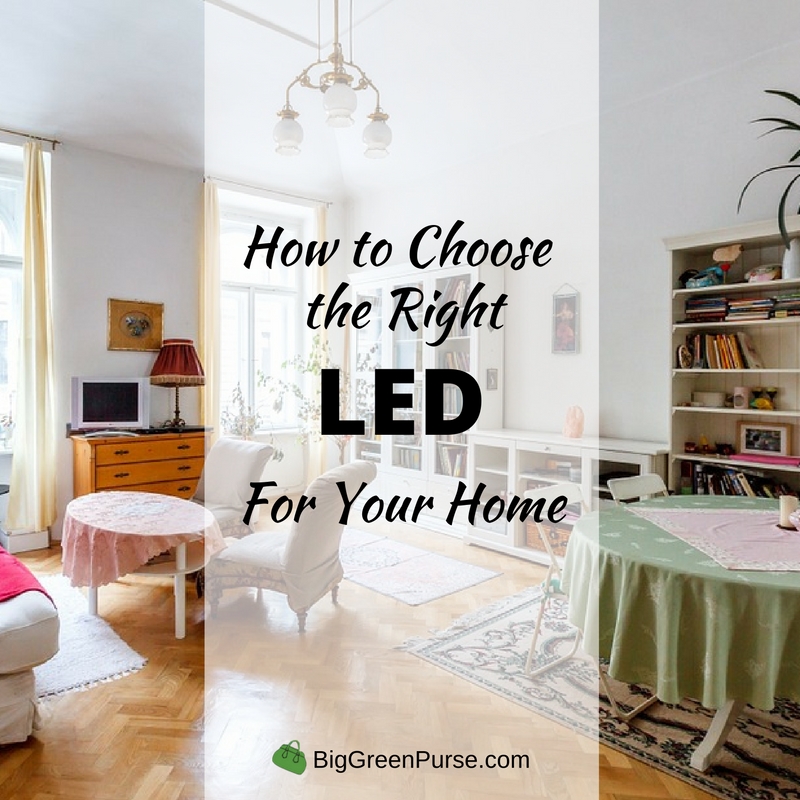
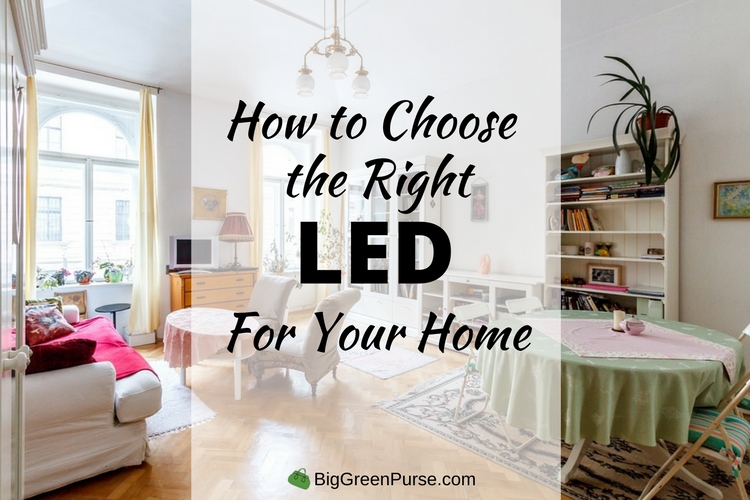
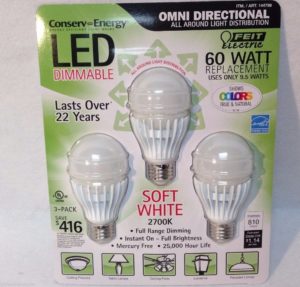 Soft white LED light bulbs.
Soft white LED light bulbs.